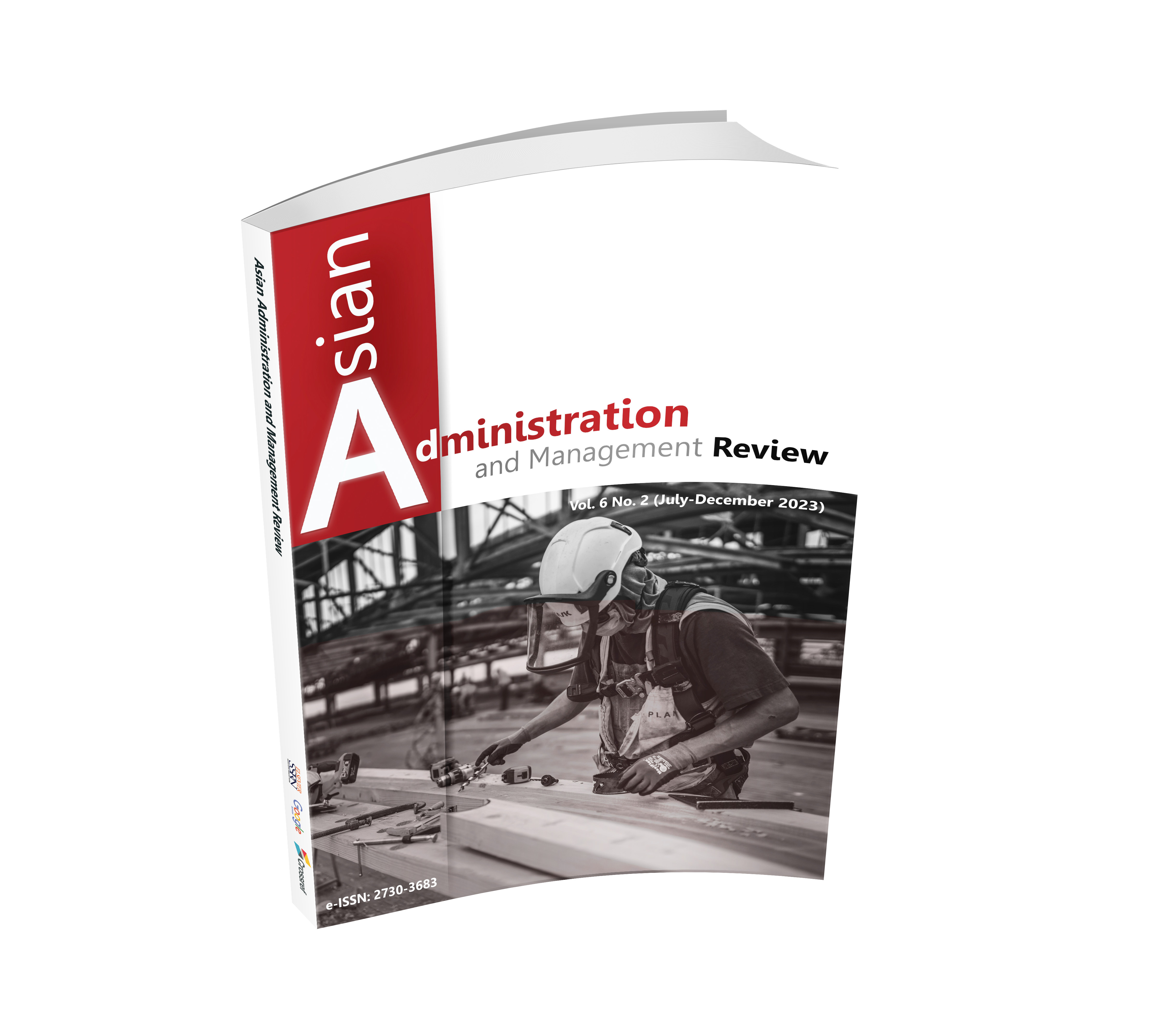VALUE PROPOSITION AND CONSUMER LIFESTYLES AFFECTING CUSTOMER LOYALTY OF PTT LPG GAS STATION
DOI:
https://doi.org/10.14456/aamr.2023.16Keywords:
Value Proposition, Consumer Lifestyle, Customer Loyalty, LPG Gas StationAbstract
This research aimed to study the causal variables of value proposition and consumer lifestyles that impacted the customer loyalty of PTT's LPG gas station. The population used in the study were people who use PTT's LPG gas station in Chumphon Province, Thailand, total of 5 locations. The results of the study indicated that the multiple regression analysis of value proposition on customer loyalty of PTT's LPG gas station. It was found that value proposition regarding products and services, pains relievers, gain creators had effects on customer loyalty of PTT's LPG gas station with the statistical significance level of 0.05. These three dimensions of value proposition collectively had a predictive power and explained 11.6% of the variance in customer loyalty of PTT's LPG gas station. The results of the study indicated that the multiple regression analysis of consumer lifestyle on customer loyalty of PTT's LPG gas station. It was found that consumer lifestyle regarding Innovators, believers, makers and Survivors had effects on customer loyalty of PTT's LPG gas station with the statistical significance level of 0.05. Thinkers, achieves, experiencers and strivers did not affect customer loyalty of PTT's LPG gas station. All 8 elements of consumer lifestyle collectively had a predictive power and explained 16.6% of the variance in customer loyalty of PTT's LPG gas station.
Downloads
References
Bunnag, C., & Tuanchaem, D. (2017). Lifestyle Patterns Influencing Behavior of Using the Krung Sri Frist Choice Cash Card among the Working People in Bangkok Metropolitan. MUT Journal of Business Administration, 14(2), 224-247.
Chitsawang, P. (2022). A study of marketing through the value proposition that affects the buying and selling of big white pomelo products: a case study of Samutsongkhram Province. Master of Business Administration Thesis, Ramkhamhaeng University.
Cochran, W. (1977). Sampling Techniques. 3rd ed. New York: John Wiley & Sons.
Cooper, D., & Schindler, P. (2003). Business Research Methods. 8th ed. Massachusetts: McGraw-Hill Irwin.
Dimi, K. (2022). Value Proposition and New Marketing Mixs 4Es to Customer Loyalty of Construction Materials Business in Chumphon Province. [Unpublished master thesis]. King Mongkut’s Institute of Technology Ladkrabang.
Energy Policy and Planning Office. (2000). Natural Gas for Vehicles. Bangkok: Energy Policy and Planning Office.
Hair, J., Black, W., Babin, B., & Anderson, R. (2010). Multivariate Data Analysis. 7th ed. New Jersey: Pearson Prentice Hall.
Hawkins, D., & Mothersbaugh, D. (2010). Consumer Behavior: Building Marketing Strategy. 11th ed. New York: McGraw-Hill.
Oliver, R. (1999). Whence Consumer Loyalty?. Journal of Marketing, 63, 33-34.
Osterwalder, A., Pigneur, Y., Bernarda, G., & Smith, A. (2014). Value Proposition Design: How to Create Products and Services Customers Want. New Jersey: John Wiley & Sons.
Pokorná, J., Pilar, L., Balcarová, T., & Sergeeva, I. (2015). Value Proposition Canvas: Identification of Pains, Gains and Customer Jobs at Farmers’ Markets. Economics and Informatics, 7(4), 123-130.
Rovinelli, R., & Hambleton, R. (1977). On the Use of Content Specialists in the Assessment of Criterion-Referenced Test Item Validity. Tijdschrift Voor Onderwijs Research, 2, 49-60.
Ruamsupthawee, N. (2014). Factors that Influence Customers’ Loyalty to Nation’s Medias. Master of Business Administration Thesis, Nation University.

Downloads
Published
How to Cite
Issue
Section
License
Copyright (c) 2023 Authors

This work is licensed under a Creative Commons Attribution-NonCommercial-NoDerivatives 4.0 International License.











.png)


